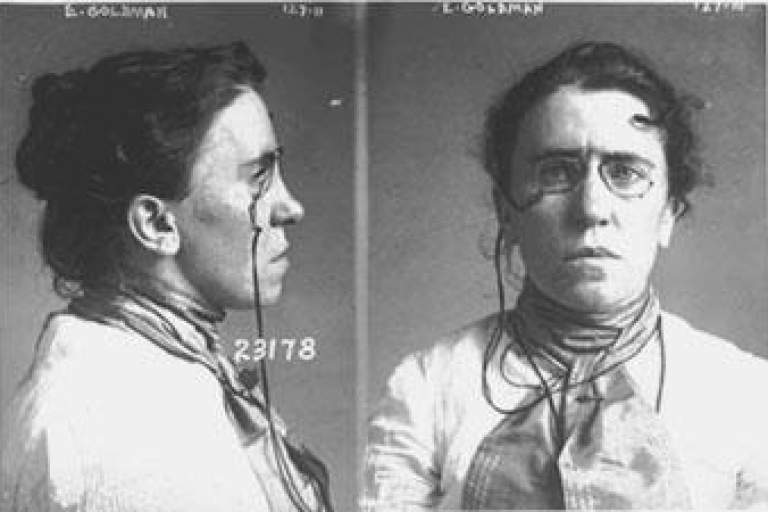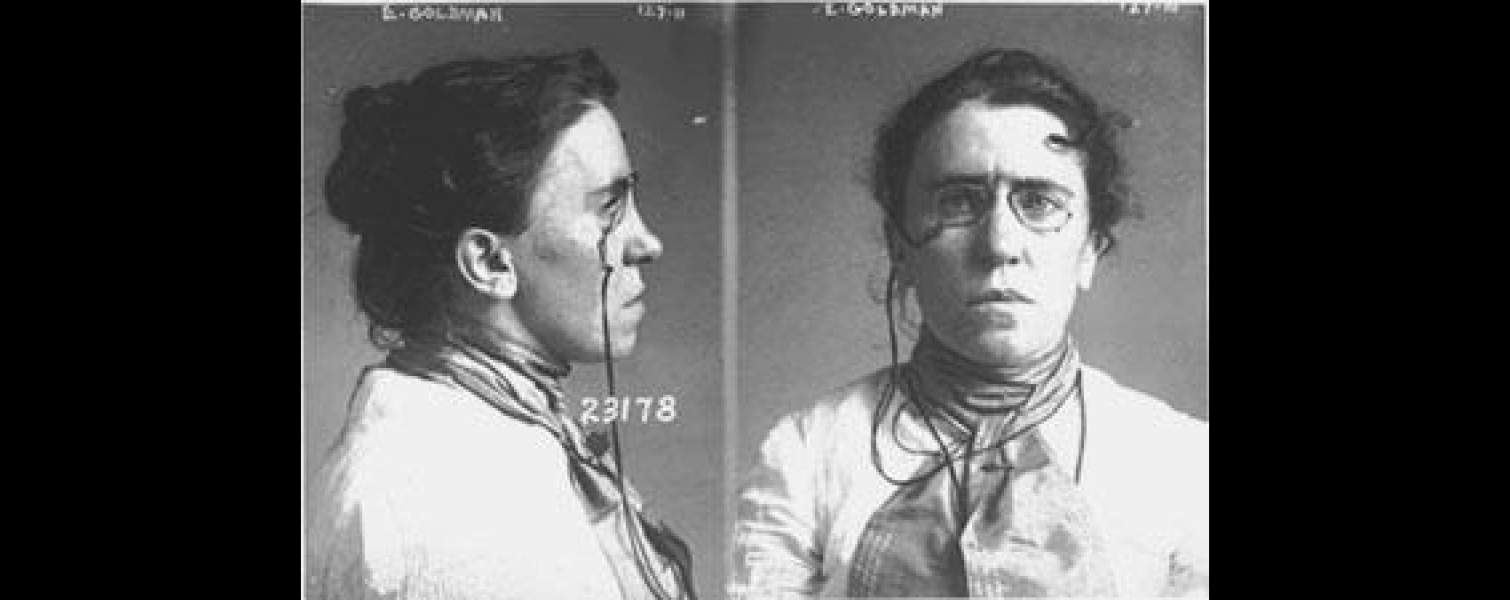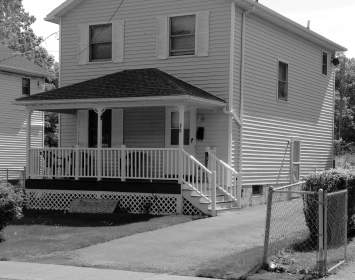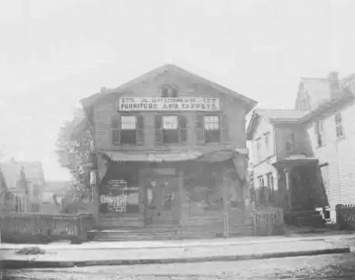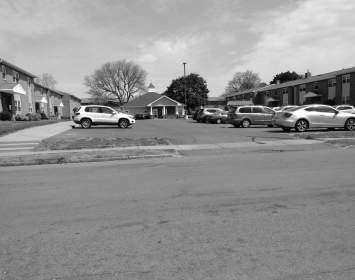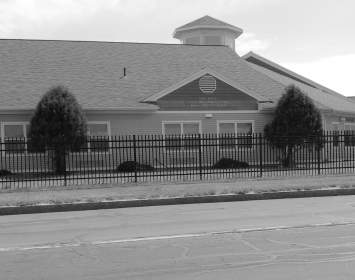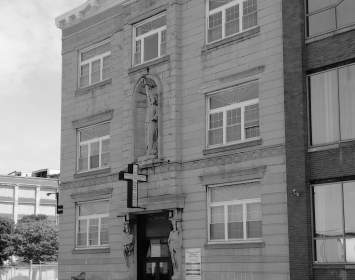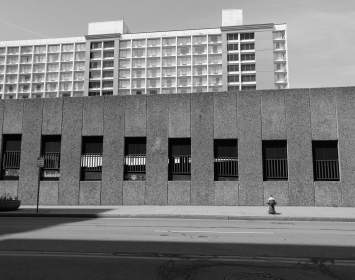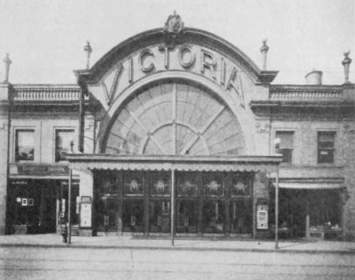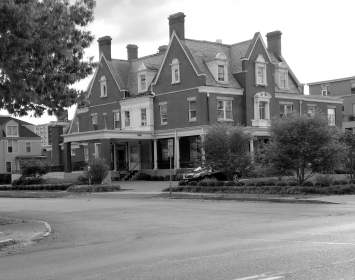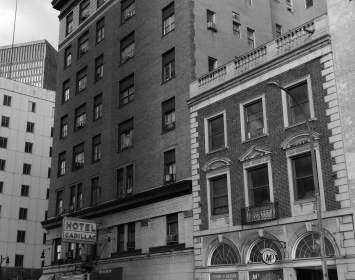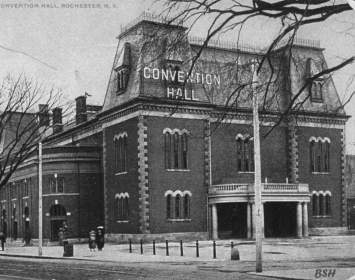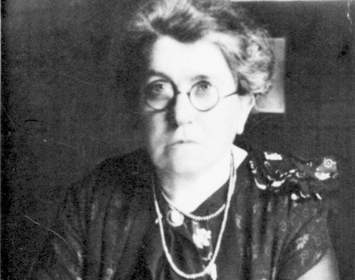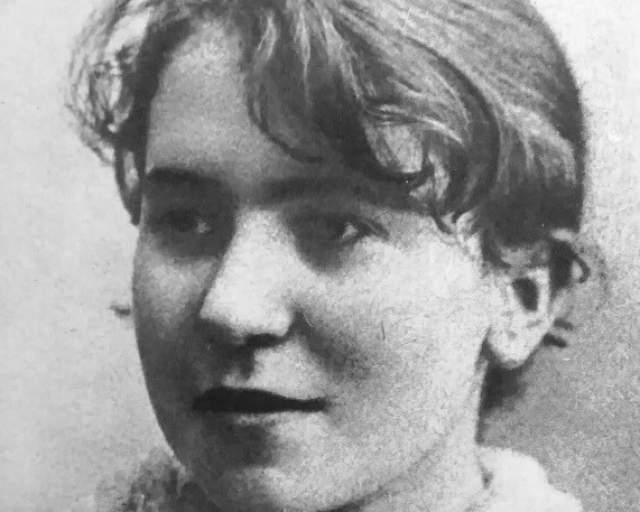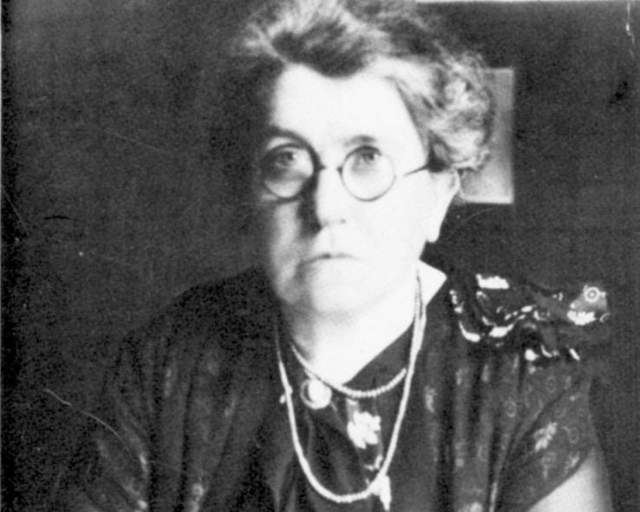Anarchism seeks to free sovereign individuals from the control of governments. For reasons of both logic and history, European anarchist theorists including Mikhail Bakunin and Pierre-Joseph Proudhon viewed the church as the state’s accomplice in oppressing the populace. It should surprise no one, then, that when anarchist activism came to the United States, its exponents would be almost entirely atheists.
In Anarchism: What It Really Stands For, Emma Goldman (1869–1940) wrote: "Anarchism has declared war on the pernicious influences which have so far prevented the harmonious blending of individual and social instincts, the individual and society. Religion, the dominion of the human mind; Property, the dominion of human needs; and Government, the dominion of human conduct, represent the stronghold of man's enslavement and all the horrors it entails."
U.S. anarchist activism was strongest along the East Coast and in the heartland, but the movement has at least one root in west-central New York State. Goldman, perhaps the most effective and prolific American anarchist, was working in a Rochester sweatshop when news of the Haymarket tragedy in Chicago began her radicalization. She immediately left Rochester for New York City and her future as an anarchist.
With the turn of the twentieth century, Goldman had attained national prominence. She conducted multiple lecture tours, often arranging Rochester stops so she could visit with her remaining family members.
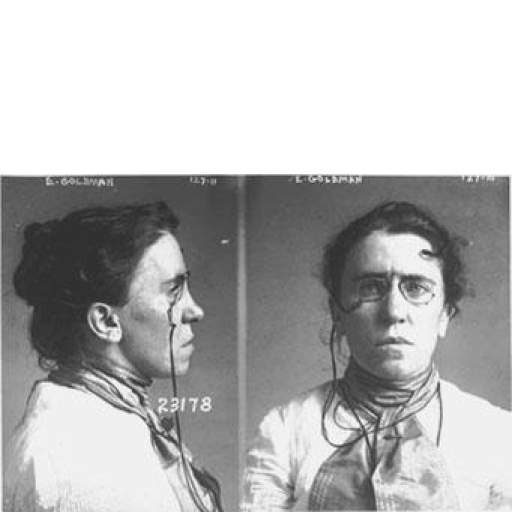
Anarchist Emma Goldman arrested in 1901
Emma Goldman’s mug shots from a 1901 arrest.
Those Involved
Associated Historical Events
Emma Goldman's Rochester Years
January 1886–August 1889
Emma Goldman Delivers First Rochester Lecture
January 1890
Emma Goldman Addresses Rochester Garment Workers
July 7, 1905
Emma Goldman Speaks on 'Tolstoy, Artist and Anarchist'
January 6, 1911
Emma Goldman Speaks on 'The War'
December 20, 1914
Emma Goldman Speaks on 'The Birth Strike'
December 21, 1914
Emma Goldman Speaks on 'Tolstoy'
December 13, 1916
Emma Goldman Speaks on Ibsen's Drama
December 14, 1916
Emma Goldman Speaks on Strindberg's Drama
December 15, 1916
Emma Goldman Speaks on 'Anarchism and Human Nature'
December 17, 1916
Emma in Rochester During 1934 Lecture Tour
February 1–April 15, 1934
